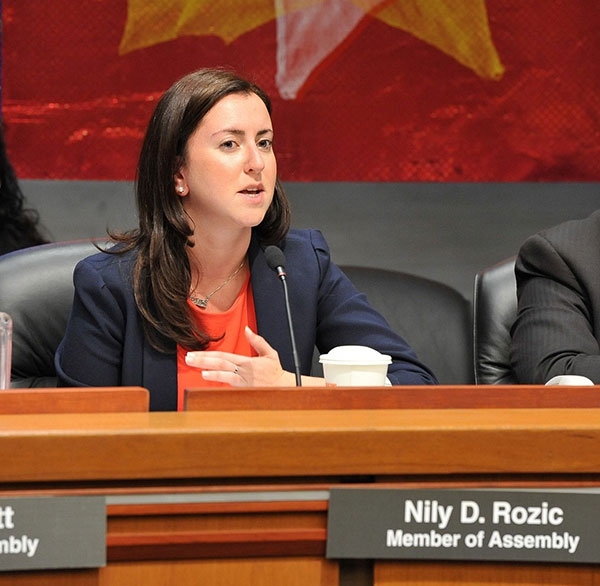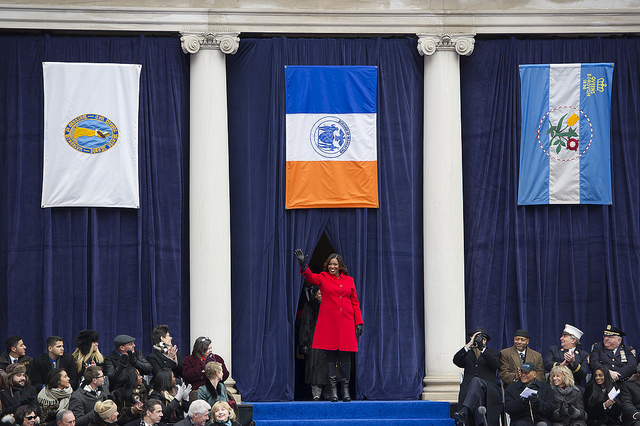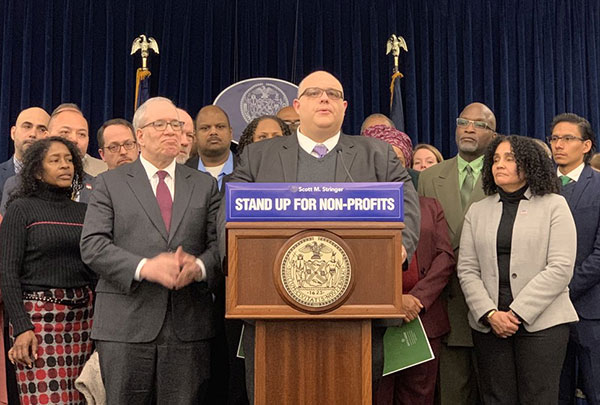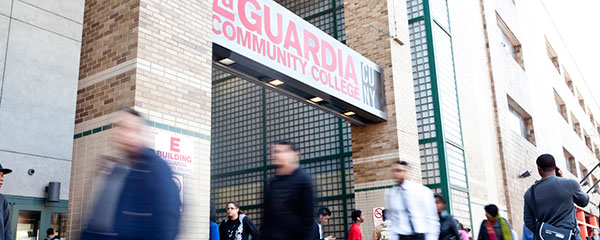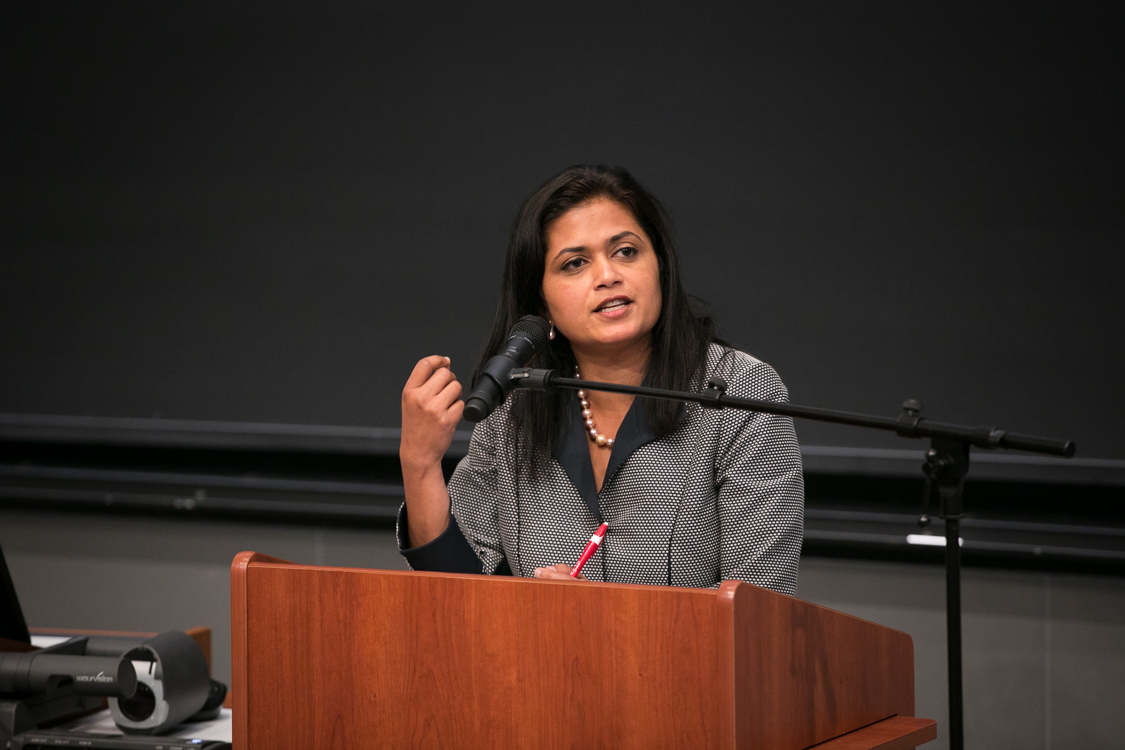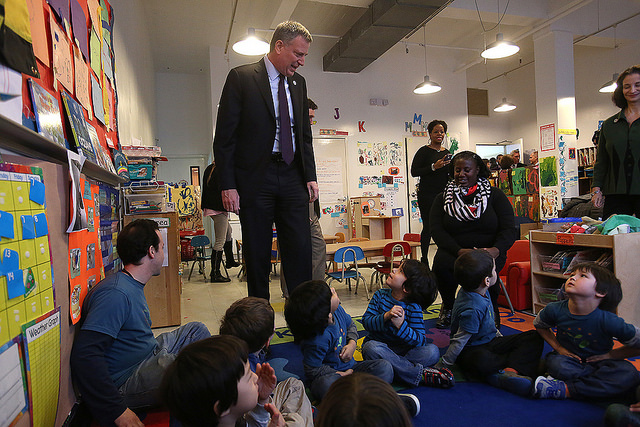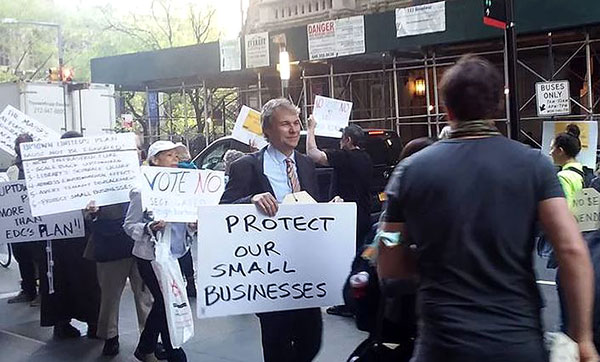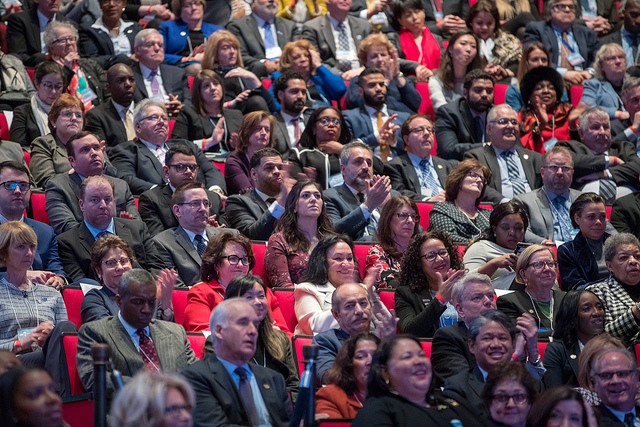
(photo: Governor's Office)
Imagine two New Yorkers heading to Albany for a day of advocacy.
One is a lobbyist with multiple clients, traveling to the Capitol in Amtrak business class for the third time that week. She’s spent a career working behind the scenes with elected officials trying to influence legislation and get favorable treatment for her clients. The other is an entry-level employee at a homeless shelter, sitting in a coach bus filled with clients and nonprofit service providers. It will be his first-ever meeting with an elected official.
The average New Yorker understands that these two New Yorkers— a lobbyist and a nonprofit employee—have very different roles in our political system. Why is Governor Cuomo trying to treat them as the same?
Currently, professional lobbyists must report who is paying them, which government officials they speak with, and which laws or regulations they are trying to influence. This ensures government officials know who they are talking to and taxpayers know who is spending large amounts of money to influence the government.
To follow these regulations, most lobbyists have compliance staff who attend mandatory trainings, read and follow the 92-page lobbyist regulations, track everyone’s lobbying time and expenses, file at least 6 reports a year, and administer “reportable business questionnaires” to the lobbying firm’s partners and managers. Other firms pay upwards of $500 per month to outside compliance experts who perform these services.
But the governor's budget plan would impose a stringent regulatory regime on any organization spending $500 or more to reach out to lawmakers. The likely result: grassroots organizations will be unable to meet with lawmakers, leaving the legislative corridors clear for big spending lobbyists to wield their influence and set the agenda.
Nonprofits often rely on their own staff or volunteers to communicate with elected officials. Current regulations require nonprofits to file the same reports as lobbyists if they spend $5,000 or more in a single year. At the $5,000 threshold, this reporting requirement for nonprofits is already a bit over the top: because no money changes hands, there is less chance of influence peddling. And mandatory disclosure for nonprofits seems duplicative, as a legislator already knows the employee of a local social services organization speaks on behalf of that organization. Already, this $5,000 threshold covers more than 99% of all lobbying expenses—this part of the system works.
The governor’s proposal would reduce this registration trigger to a mere $500 per year. A nonprofit that pays $1,000 to rent a bus to take volunteers from New York City to Albany for one lobby day would be treated like a professional lobbyist. So would a nonprofit whose executive director has a few meetings with her local City Council members to advocate for criminal justice reform that would affect local teens.
Why does it matter when nonprofits are being treated like lobbyists? It’s because the cost of compliance is too high. Thinly staffed grassroots organizations do not have compliance staff. If they file a single report late, they can be fined $2,000. Faced with the steep cost of compliance, many will go silent. They will not take community members to Albany, or explain to elected officials how proposed laws will play out in the real world.
If Governor Cuomo gets his way, pretty soon we won’t be able to imagine two different types of advocates heading to the State Capitol. His regulations would ensure that only well-off special interests have access to their legislators for years to come. This proposal should not pass.
***
Laura Abel is Senior Policy Counsel at Lawyers Alliance for New York. Sharon Stapel is President and CEO of the Nonprofit Coordinating Committee of New York. Michelle Jackson is Deputy Director of the Human Services Council of New York.
***
Have an op-ed idea or submission for Gotham Gazette? Email This email address is being protected from spambots. You need JavaScript enabled to view it.
